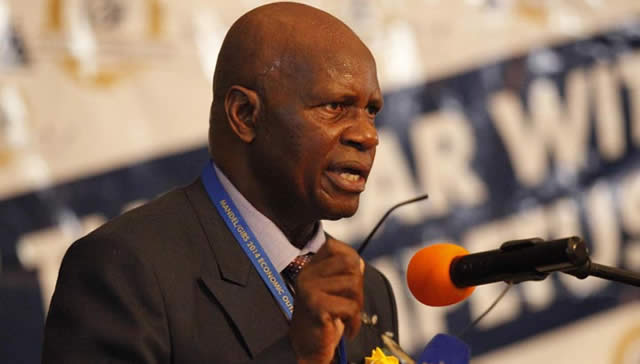EDITORIAL COMMENT: Food aid must be distributed equitably

The government started distributing food aid to vulnerable people across the country yesterday. Widespread lack of rain in the 2014/2015 agricultural season left an estimated 1,5 million needing food aid in Masvingo, Matabeleland South, southern Manicaland, southern Midlands and parts of Matabeleland North. The situation was becoming unpleasant in some areas and households where people were beginning to drastically reduce their rations and skip meals. Seven hundred thousand tonnes of maize are being imported to save such people from hunger.
Harare, according to the second crop assessment report needs the biggest consignment of food, 236,000 tonnes, followed by Masvingo which needs 131,000 tonnes. Manicaland is third with a requirement of 96,000 tonnes followed by Midlands 93,000 with Bulawayo needing 72,000 tonnes. Matabeleland South needs 61,000, Matabeleland North 46,000 and Mashonaland East 44,000 tonnes. This means about 779,000 tonnes of maize are needed to feed the hungry.
The national response to food shortage of this nature has always been through the government providing aid, development partners chipping in and the open market making available food for those who are food insecure but have money to be able to buy.
This mechanism has been reactivated. For some time, millers have been importing maize from Zambia, milling and selling maize meal. This is in addition to their normal processing of locally sourced grain. NGOs are active on the ground too.
We are however particularly interested in the government intervention on whom the primary responsibility of feeding the people rests and given the inherent imperfections of the market and NGOs’ typical reliance on donors. Markets are not really for the poor; they are for the more resourced. Markets pursue profit, so the poor sometimes lack enough money to buy from supermarkets. NGOs cannot be effective too because they rely on the availability of donor funds and moral suasion of respective benefactors.
“The President himself has said as a party and as a government, we shall not allow anyone to die from hunger, but the burden of identifying families or areas that are hard hit, families which should be given priority to receive food cannot be known by me at headquarters,” said Acting President Emmerson Mnangagwa on Friday.
“We have structures at the ground level from the government side; we have village committees, ward, district, province, that chain should send information.” As usual, the government is leading the national response to the food insecurity, as VP Mnangagwa said.
We are hopeful that all the three partners in the provision of food aid — the government, NGOs and the market — will act most responsibly in ensuring that the vulnerable access food. We demand that the rations reach those in need wherever they are and whoever they are. By this we are saying even the remotest places, most of which are ironically always food-insecure because of poor climatic conditions, poverty and weak markets; places like Binga, Tsholotsho, and Uzumba must be reached. Every Zimbabwean who lacks food must have unimpeded access to it regardless of their social standing, political preference, race, tribe and age. The bottom line must be anyone in need has to have food fairly availed to them.
But fair distribution of food aid is not good enough if the rations are small morsels that are not enough for a meal. We expect that in coming up with the size of the hungry population and the amount of food needed, the government and its partners also paid particular attention to the normal food portion a person needs per day.
Some might take it as an insult to provide food that is only enough for one meal when a person needs at least two meals a day. So we expect enough of it for every person in need of it.
Studies have shown that food insecurity hits the elderly, children, the terminally ill and child-headed families the hardest. The able-bodied, adults and healthy are better able to find their way around the hunger than children, the elderly and the sick. Our national response to the food shortage would therefore be judged on the extent to which it ensures that these vulnerable of the vulnerable access enough nutritious food.
During MDC-T’s heydays, a few NGOs were caught denying perceived Zanu-PF members food aid. This politicisation of food highlighted the wider challenge at that time of non-state actors openly dabbling in local politics. This forced the government to tighten regulations prohibiting NGOs from political involvement. We don’t expect anything of that nature to recur.
Regarding the market, the prevailing food prices and stocks are reasonable. We applaud traders for this. Yes they exist to make a profit, but there will be no profit to make if they price their food beyond the reach of the people. The hope is the prices and stocks remain reasonable until the next harvest around March next year.
Another point to note is that in cases of hunger, we tend to look to imported food for salvation ignoring local capacity to contribute to feeding the hungry. While much of the southern parts of the country are food insecure, Mashonaland Central has a surplus of 76,000 tonnes, 4,000 tonnes more than Bulawayo’s requirement. Mashonaland West has a surplus of 54,000 tonnes. It is crucial therefore for formal and informal mechanisms to be put in place for the surplus to be moved to distressed areas.








Comments